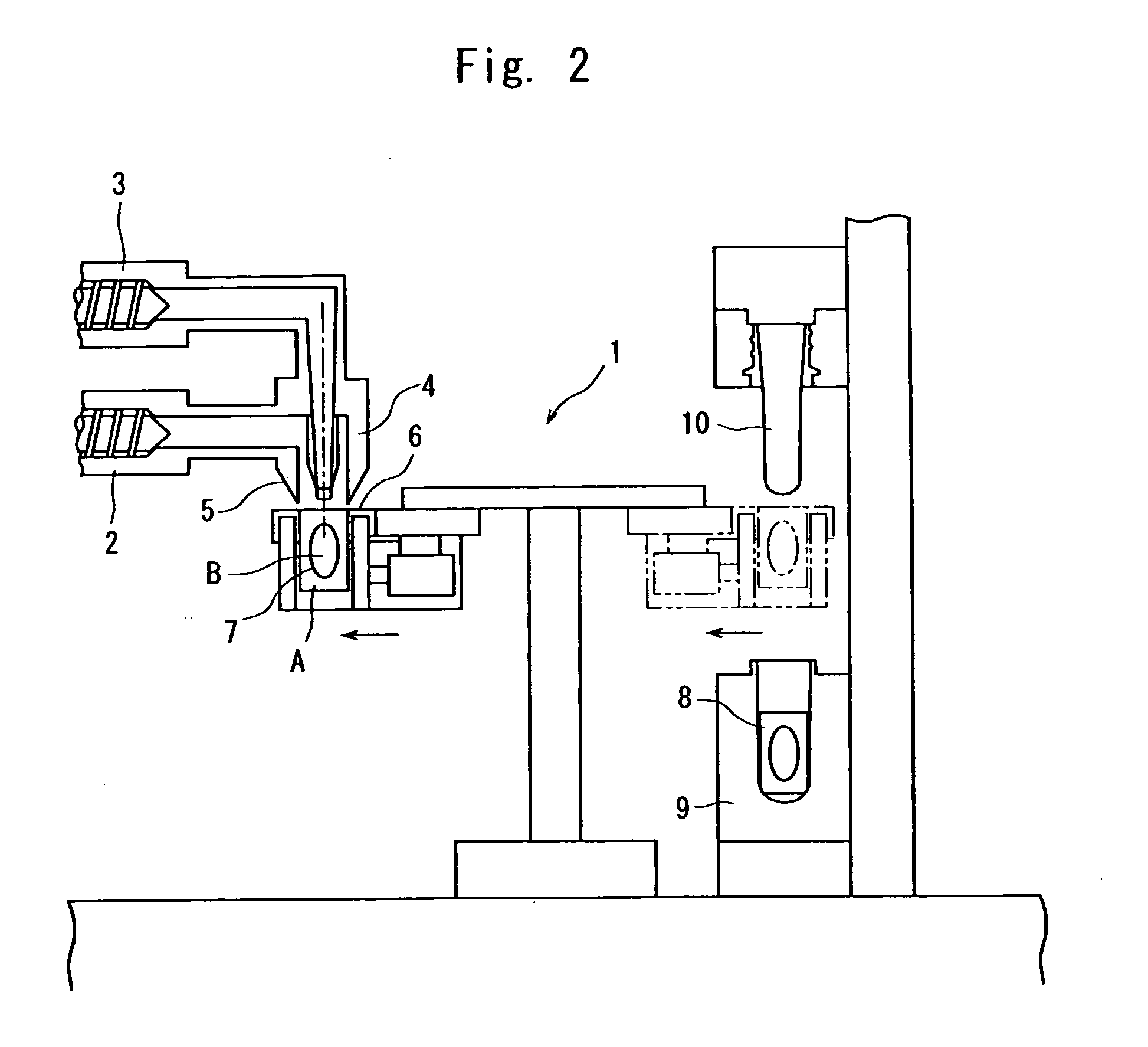Preform and Blow-Formed Container Made from the Preform
a technology of preform and blow-formed container, which is applied in the field of preform, can solve the problems of difficult to obtain satisfactory mechanical strength, deterioration of appearance, and whitening of gate portions and the vicinity of specific preforms obtained by injection molding, and achieves good mechanical strength and appearance, good appearance, and good mechanical stability
- Summary
- Abstract
- Description
- Claims
- Application Information
AI Technical Summary
Benefits of technology
Problems solved by technology
Method used
Image
Examples
example 1
[0081] By using a polyethylene terephthalate [RT543CTHP: manufactured by Nihon Unipet Co.] as a polyester resin, there was formed a single-layer preform having a weight of 24.4 g, an overall length of 45 mm, a length L from under the neck ring to the bottom of 23 mm, an outer diameter D of the top panel of the mouth portion of 49 mm, and a ratio L / D of 0.47 in a forming cycle of 8 seconds. A portion under the neck ring of the preform and a portion in the bottom were cut out in the direction of thickness and were measured for their Tc1 and Tc2 by using the DSC to find ΔTc. The mouth portion of the preform formed under the same conditions was crystallized and was measured for its smoothness. Thereafter, a biaxially draw blow-formed bottle was formed and was evaluated for its sealing property.
example 2
[0082] A single-layer preform was formed in the same manner as in Example 1 with the exception of setting the cycle for forming the preform to be 13 seconds, and was measured by using the DSC, measured for its smoothness after the mouth portion has been crystallized, and from which a biaxially draw blow-formed bottle was formed and was evaluated for its sealing property.
example 3
[0083] A single-layer preform was formed in the same manner as in Example 1 with the exception of setting the cycle for forming the preform to be 18 seconds, and was measured by using the DSC, measured for its smoothness after the mouth portion has been crystallized, and from which a biaxially draw blow-formed bottle was formed and was evaluated for its sealing property.
PUM
| Property | Measurement | Unit |
|---|---|---|
| Temperature | aaaaa | aaaaa |
| Thickness | aaaaa | aaaaa |
| Dimensional stability | aaaaa | aaaaa |
Abstract
Description
Claims
Application Information
 Login to View More
Login to View More - R&D
- Intellectual Property
- Life Sciences
- Materials
- Tech Scout
- Unparalleled Data Quality
- Higher Quality Content
- 60% Fewer Hallucinations
Browse by: Latest US Patents, China's latest patents, Technical Efficacy Thesaurus, Application Domain, Technology Topic, Popular Technical Reports.
© 2025 PatSnap. All rights reserved.Legal|Privacy policy|Modern Slavery Act Transparency Statement|Sitemap|About US| Contact US: help@patsnap.com



